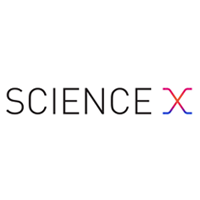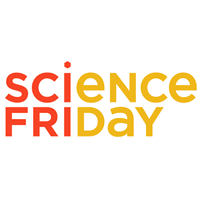Media Watch
Ten Minutes With: Port of Long Beach PM Director Tasha Higgins
ENR California -
[Tasha Higgins] earned a B.S. in Civil Engineering in 1993 from the University of California, Irvine …. [She says:] "I began my career at the University of California, Irvine. ... During freshman orientation, we heard from civil, mechanical and electrical engineering professors. The civil engineering professor floored the entire room. He did this speech, “Have you ever been on [Interstate] 405 and traffic comes to a screeching halt, then in a couple minutes it opens up?” Everyone was like, “Yes!” “Do you want to know why it happens? Take my class to find out.” I changed my major that week. I knew I wanted to be a transportation engineer. The rest is history.” Read More
Adeyemi Adeleye
Chemical & Engineering News -
Adeyemi Adeleye struggles with his houseplant relationships. … Luckily, Adeleye, an [assistant professor and] environmental chemist at the University of California, Irvine, is better at building relationships with collaborators from different disciplines. His work on nanoparticles for environmental remediation and water treatment spans chemistry, materials science, biology, and these days, agriculture. Adeleye designs nanomaterials to trap toxic arsenic in contaminated soil without harming critters such as earthworms and plants like lettuce. Read More
Researchers Discover a Biosensor Monitor to Track Pulse and Connect with Devices Wirelessly
AZoSensors -
Researchers at the University of California, Irvine have developed a novel self-powered, wristwatch-style health monitor that can wirelessly interact with a nearby smartphone or tablet and measure a wearer’s pulse without needing a battery or an additional power source. … Imagine you’re out working in a remote location—anywhere, the desert on a mission, in mountains hiking or even a space station, for example—and you need to keep track of your health information on demand, or there’s an incident, and you need to monitor someone’s vital signs urgently and accurately said Rahim Esfandyar-Pour, Study Senior Co-Author and Assistant Professor, Electrical Engineering and Computer Science and Biomedical Engineering, University of California, Irvine. Read More
Self-powered smartwatch replaces battery with ‘wonder material’
The Independent -
The self-powered device, developed by a team at the University of California, Irvine, can keep track of a wearer’s pulse while also communicating with a nearby smartphone. ... “This innovation achieves many significant outcomes in one package,” said Rahim Esfandyar-Pour, an assistant professor of electrical engineering and computer science at UCI. “It enables continuous, battery-free, wireless and on-demand health monitoring anytime and anywhere. It’s made with low-cost and flexible materials and can be tailored to meet a variety of wearable bioelectronic sensors’ requirements.” Read More
NASA grant to go toward UCI-led project studying beach, dune loss
Daily Pilot -
University officials in Irvine announced earlier this month that researchers have received a $675,000 grant from NASA that will be divided between both universities. Approximately $350,000 will go to the Irvine campus for what is expected to be a three-year project to support graduate students, researchers and the cost of some of the equipment used in the study. UCI professor of civil and environmental engineering Brett Sanders said the project aims to use satellites to examine the distribution — height, width and volume — of sand on local beaches. [Subscription required, you can request an electronic copy of the article by sending an email to communications@uci.edu.] Read More
Best of Last Week
Science X -
In technology news …. a team at the University of California, Irvine, developed a light, thin composite material capable of stretching to twice its normal size—called cephalopod skin, the material was found to work well as an insulator. Read More
Self-Driving Cars Work Better With Smart Roads
IEEE Spectrum -
The concept of smart roads is not new. It includes efforts like traffic lights that automatically adjust their timing based on sensor data and streetlights that automatically adjust their brightness to reduce energy consumption. PerceptIn, of which coauthor [Shaoshan] Liu is founder and CEO, has demonstrated at its own test track, in Beijing, that streetlight control can make traffic 40 percent more efficient. (Liu and coauthor [Jean-Luc] Gaudiot, Liu’s former doctoral advisor [and current engineering professor] at the University of California, Irvine, often collaborate on autonomous driving projects.) Read More
Some dams might worsen flooding
KJZZ -
Dams serve a variety of purposes, from energy generation to flood control. But new research in the journal Nature Communications concerning China's lower Yellow River suggests dams actually can raise flood risk by altering the makeup and structure of lowland riverbeds. “The bed is really flat; and then you move upward, closer to the dam site and, immediately adjacent to the dam, the channel bed become really, really rough,” said lead author Hongbo Ma, a postdoctoral researcher at University of California, Irvine. Read More
SWE Diverse Podcast: Domino Master’s Wonder Women Team
Society of Women Engineers -
On this episode of Diverse, SWE President Rachel Morford sits down with two members of FOX’s Domino Master’s Wonder Women Team, Farah Bajwa and Brianne Martin. Listen as they talk about their experience on Domino Masters and the engineering knowledge and background they brought to the competition. … Farah Bajwa … received a bachelor’s degree from the University of California, Irvine. Her electro-mechanical engineering major was a custom major, as it wasn’t formally offered. Read More
The Cephalo-Inspired Technology Of The Future
Science Friday -
“Cephalopods are such exciting sources of inspiration,” says Alon Gorodetsky, [associate professor], a materials scientist at the University of California, Irvine. “The things they do, how they move, even their brains—it’s like science fiction stuff.” … In this segment, Ira chats with Gorodetsky and other technologists about an array of cephalopod-inspired innovations, from adaptive camouflage to self-healing materials. Read More










